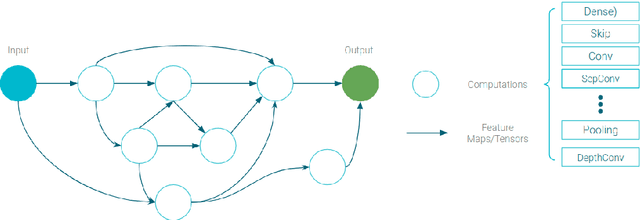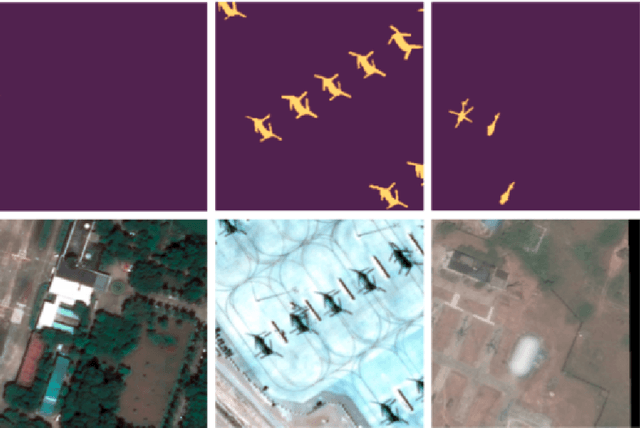Anthony Cazasnoves
Neural Architecture Search in operational context: a remote sensing case-study
Sep 15, 2021



Abstract:Deep learning has become in recent years a cornerstone tool fueling key innovations in the industry, such as autonomous driving. To attain good performances, the neural network architecture used for a given application must be chosen with care. These architectures are often handcrafted and therefore prone to human biases and sub-optimal selection. Neural Architecture Search (NAS) is a framework introduced to mitigate such risks by jointly optimizing the network architectures and its weights. Albeit its novelty, it was applied on complex tasks with significant results - e.g. semantic image segmentation. In this technical paper, we aim to evaluate its ability to tackle a challenging operational task: semantic segmentation of objects of interest in satellite imagery. Designing a NAS framework is not trivial and has strong dependencies to hardware constraints. We therefore motivate our NAS approach selection and provide corresponding implementation details. We also present novel ideas to carry out other such use-case studies.
Adapted sampling for 3D X-ray computed tomography
Jul 29, 2015



Abstract:In this paper, we introduce a method to build an adapted mesh representation of a 3D object for X-Ray tomography reconstruction. Using this representation, we provide means to reduce the computational cost of reconstruction by way of iterative algorithms. The adapted sampling of the reconstruction space is directly obtained from the projection dataset and prior to any reconstruction. It is built following two stages : firstly, 2D structural information is extracted from the projection images and is secondly merged in 3D to obtain a 3D pointcloud sampling the interfaces of the object. A relevant mesh is then built from this cloud by way of tetrahedralization. Critical parameters selections have been automatized through a statistical framework, thus avoiding dependence on users expertise. Applying this approach on geometrical shapes and on a 3D Shepp-Logan phantom, we show the relevance of such a sampling - obtained in a few seconds - and the drastic decrease in cells number to be estimated during reconstruction when compared to the usual regular voxel lattice. A first iterative reconstruction of the Shepp-Logan using this kind of sampling shows the relevant advantages in terms of low dose or sparse acquisition sampling contexts. The method can also prove useful for other applications such as finite element method computations.
 Add to Chrome
Add to Chrome Add to Firefox
Add to Firefox Add to Edge
Add to Edge